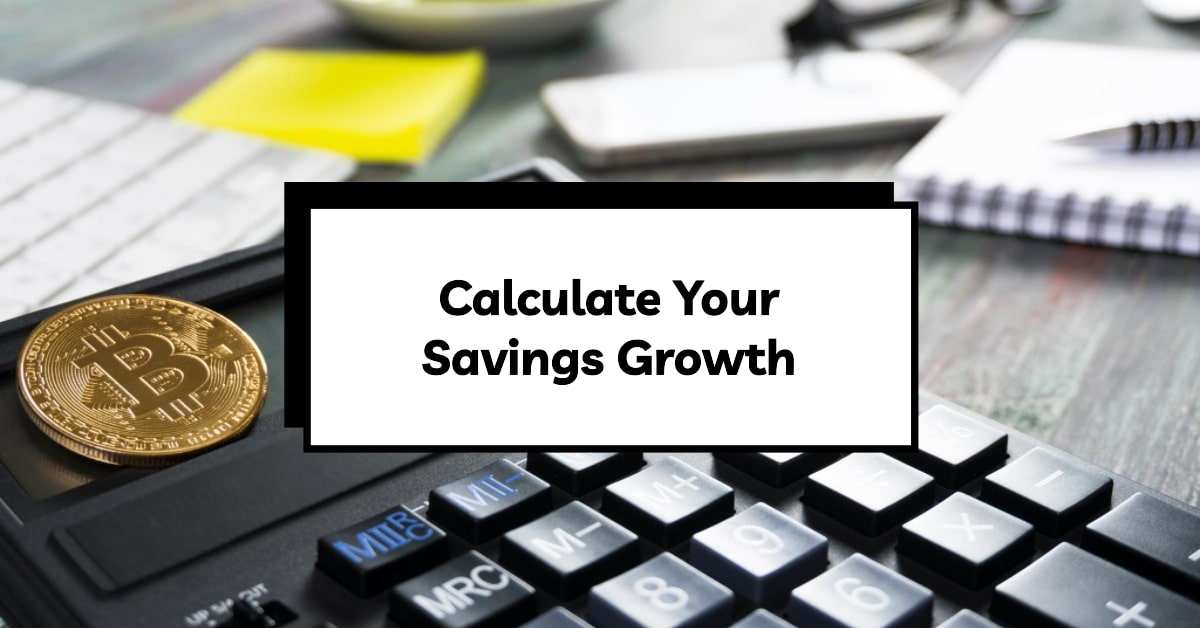
A compound interest calculator is a financial tool that calculates interest on both the principal amount and any accumulated interest. It’s a powerful way to grow your savings over time. Use our Compound Interest Calculator to see how your money can multiply in a compound interest account.
Advanced Compound Interest Calculator
| Year | Balance |
|---|
When it comes to growing your savings, investments, or 401k, one of the most powerful financial tools at your disposal is compound interest. In this guide, we will delve deep into the intricacies of compound interest, its calculations, and its impact on your financial future. We’ll equip you with the knowledge you need to make informed decisions and watch your wealth grow over the years.
What Is a Compound Interest Calculator?
A Compound Interest Calculator is a financial tool that computes the growth of your savings or investments over time, taking into account not only the initial principal but also the interest that accumulates on it. Unlike simple interest, where interest is calculated only on the principal amount, compound interest involves earning interest on both the initial amount and the interest that accrues over time. This compounding effect can significantly boost your savings.
Imagine you deposit money in a savings account or invest in a financial product, and the interest earned is reinvested or added to the principal. Over time, you’ll earn interest on your interest, leading to exponential growth. It’s like a snowball effect for your money!
The Power of Compound Interest
Compound interest can be a game-changer when it comes to achieving your financial goals. Let’s explore how it works and why it’s so powerful.
How Compound Interest Works
- Initial Investment: You start with an initial amount, known as the principal, which you deposit or invest.
- Interest Rate: The financial institution or investment vehicle offers an annual interest rate, which determines how much interest you’ll earn on your principal.
- Compounding Frequency: The frequency at which interest is added to your principal plays a crucial role. It can be annually, quarterly, monthly, daily, or even continuously.
- Time: The longer you leave your money to grow, the more powerful the effects of compounding.
- Reinvestment: With compound interest, the interest you earn is reinvested, adding to your principal. This results in interest being calculated on a larger amount each time.
- Continuous Growth: As your savings grow, so does the interest earned, creating a cycle of exponential growth.
Unveiling the Power of Compound Interest
Compound Interest Explained: The concept of compound interest, often referred to as ‘interest on interest,’ revolves around the notion that accumulated interest is added back to your principal sum. Consequently, future interest calculations are made on both the original principal and the already-accrued interest. This dynamic is akin to a snowball effect, where your wealth starts to roll and grow at an accelerating pace over time.
Warren Buffett’s Testimony: The importance of compound interest cannot be overstated, as it has been hailed by none other than Warren Buffett, one of the world’s most successful investors. He once stated, “My wealth has come from a combination of living in America, some lucky genes, and compound interest.” It’s a testament to the immense power of this financial force.
Understanding Compound Interest Calculations
The Compound Interest Formula: Compound interest is calculated using the compound interest formula: A = P(1+r/n)^(nt), where:
- A = the future value of the investment
- P = the principal balance
- r = the annual interest rate (in decimal)
- n = number of times interest is compounded per year
- t = the time in years
For those who prefer monthly compounding, simply divide the annual interest rate by 12 and add 1. Raise this result to the power of the number of years multiplied by 12 and multiply it by your principal balance.
Let’s look at an example using this formula.
Example: $10,000 at 5% Interest Compounded Yearly
| Year | Interest Calculation | Interest Earned | End Balance |
|---|---|---|---|
| 1 | $10,000 x 5% | $500 | $10,500 |
| 2 | $10,500 x 5% | $525 | $11,025 |
| 3 | $11,025 x 5% | $551.25 | $11,576.25 |
| 4 | $11,576.25 x 5% | $578.81 | $12,155.06 |
| 5 | $12,155.06 x 5% | $607.75 | $12,762.82 |
By the end of 20 years, your initial $10,000 investment would grow to $26,532.98. This means a total interest of $16,532.98 and a remarkable return on investment of 165%.
Compounding with Additional Deposits
Another compelling strategy is to combine interest compounding with regular deposits into your savings account, SIP, Roth IRA, or 401(k). This approach can significantly amplify the growth of your money over the long term.
In our previous example, if you were to contribute an additional $100 per month into your investment, the end balance after 20 years would reach an impressive $67,121, with interest totaling $33,121 on total deposits of $34,000.
Where to Invest for Compound Interest
The question of where to invest to maximize compound interest is a common one. Various investment options, such as mutual funds, ETFs, MMRs, and high-yield savings accounts, are available. However, the best choice depends on your individual circumstances and financial goals.
We recommend consulting with a qualified financial advisor to receive personalized advice. Additionally, you can explore articles from renowned financial websites for in-depth insights into the best investment options.
Frequently Asked Questions
When is my interest compounded?
Interest can be compounded either at the start or end of the compounding period. If you include additional deposits or withdrawals in your calculation, you have the flexibility to choose whether they occur at the start or end of each period.
Can I include regular withdrawals?
You can incorporate regular withdrawals in your compound interest calculation, either as monetary withdrawals or as a percentage of interest/earnings. This can be combined with regular deposits, providing flexibility for your specific financial strategy.
What is the effective annual interest rate?
The effective annual rate, also known as the annual percentage yield (APY), is the interest rate you actually receive on your savings or investment after accounting for compounding. It is typically higher than the nominal annual interest rate, with the frequency of compounding playing a crucial role in its calculation.
What is RoR/TWR?
The Rate of Return (RoR) represents the percentage return on your investment over the entire investment term, accounting for deposits and withdrawals. On the other hand, the Time-Weighted Rate of Return (TWR) breaks down each period’s growth individually, removing the effects of additional deposits and withdrawals to provide a clearer picture of your investment’s performance.
In conclusion, understanding and harnessing the power of compound interest is essential for achieving your financial goals. Whether you’re saving for retirement, a down payment on a house, or any other future endeavor, compound interest can be your most potent financial ally. By using the right tools and strategies, you can make your money work for you and watch it grow over time.
Conclusion
The Compound Interest Calculator is a fantastic tool that can help you achieve your financial dreams. It’s all about making your money work for you, and the earlier you start, the better. Set clear goals, choose your investments wisely, and let compound interest do its magic.
Remember, it’s not about how much you save; it’s about how long you save and how often you reinvest your earnings. Start today, and watch your wealth grow over time. Your financial future is in your hands!
So, what are you waiting for? Go ahead, use the Compound Interest Calculator, and take the first step toward securing your financial success!
[bdp_post_gridbox content_words_limit=”12″]



